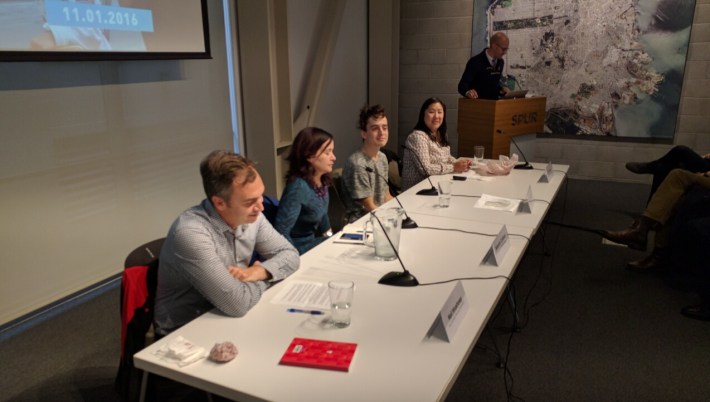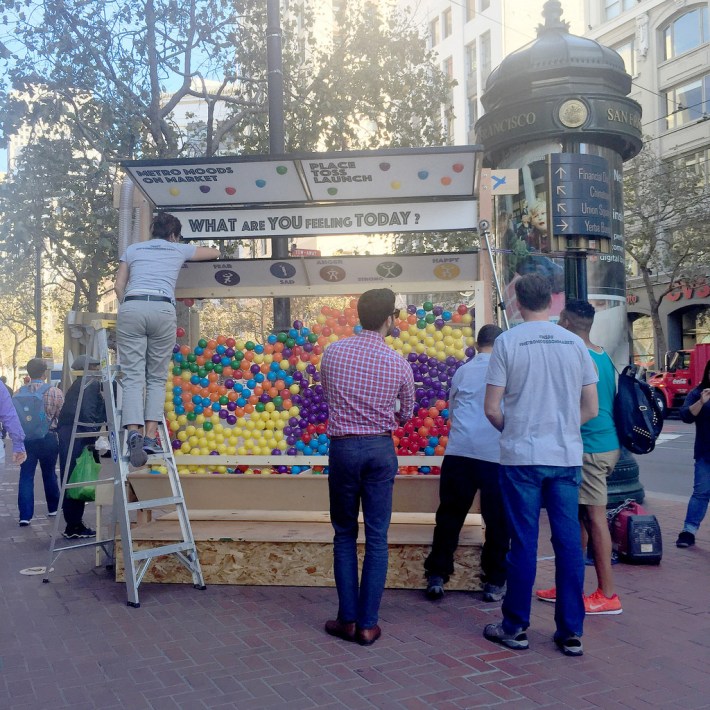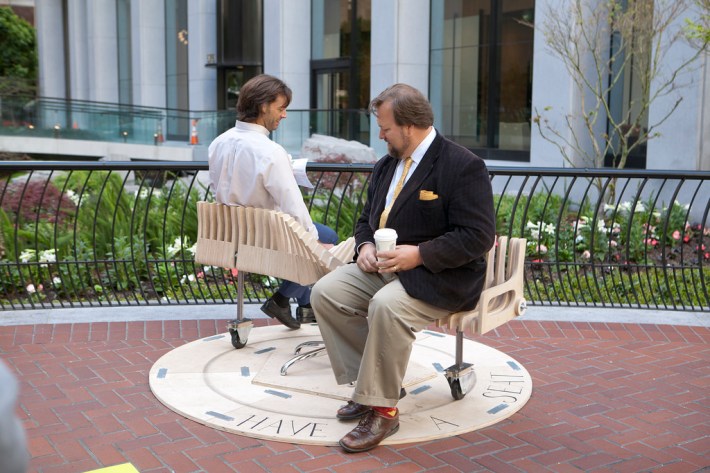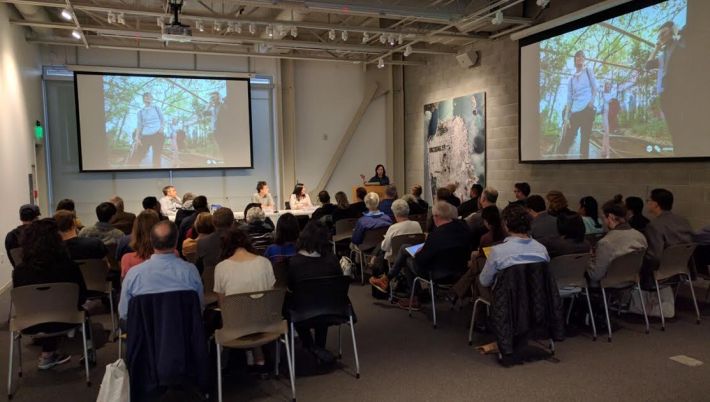
This afternoon, the San Francisco Bay Area Planning and Urban Research Association (SPUR) hosted a panel discussion at its Mission Street location that was a debrief for the Market Street Prototyping Festival. From the festival statement:
The Market Street Prototyping Festival builds upon the Better Market Street project, a five-year, multi-agency effort led by San Francisco Public Works to re-establish, improve, and enhance San Francisco’s civic backbone.
The idea behind the festival, a street arts project held October 6-8 at various locations on Market Street, was to use art to bring people together and compel social interactions, explained the panelists. "These connections improve our sense of well-being and provide for our fundamental need for social connection regardless of culture and background," said Neil Hrushowy, Manager, City Design Group with the San Francisco Planning Department. In addition to S.F. Planning, the Yerba Buena Center for the Arts and S.F. Public Works collaborated on the festival.
Hrushowy cautioned that big cities can leave residents feeling lonely and isolated. The idea behind the Prototyping Festival is to create places for people to pause on their way to work or home, look at art, and interact with strangers. "It's the opposite of social isolation, which is all too easy to feel in our cities."

For the festival, artists from around the city were selected to put up temporary displays that promote conversation, some of which--if successful--can become permanent. Take the MMM Project, also known as Metro Moods on Market. This display shows different colored balls, or "mood balls" which passersby can pick up and drop into a display according to a color-coded mood chart. For example, people are instructed to drop in a green ball if they feel strong, or a brown ball if they feel angry, or yellow if they feel happy. The idea is the board shows the collective mood of the city as people walk by.

Other displays featured benches that turn like a little merry-go-round, special rocking chairs, and a "warped face" display, which featured special lenses that distort participants facial features. Robb Godshaw, seen with one of his lenses in the photo at the start of this post, was one of the speakers at the SPUR event. During the festival, he said he delighted in watching people walk up to the lenses, stick their faces against them, and say to each other "You look stupid. No you look stupid. Oh, we both look stupid together."
Godshaw's display, which was featured at the first Market Street Prototyping Festival in 2015, can still be seen on Market, at Yerba Buena Lane. "I got a grant to do a permanent installation... Clear Channel donated an advertising case," he explained.
Surely, art displays such as these are fun and are one of the benefits of living in a large, vibrant city such as San Francisco. But Deborah Cullinan, head of the Yerba Buena Center for the Arts, sees it as much more. "The problems we face are so complex that we all need one another," she said to SPUR's audience. "I believe it is art, creativity and inspiration will have to lead the way."
Cullinan explained that, in her view, cities are still about promoting an exchange of ideas and finding solutions for universal problems. And that can't happen without vibrant public spaces that promote spontaneous interactions among people from all walks of life. "Things can't be decided by a couple of people in an office. It will be a lot of people who use the streets and sidewalks," she said.

"Public spaces are one of the few places where everyone is equal," said Hrushowy. "Even fleeting moments of connection between strangers can have a profound emotional response and can help erase boundaries between us as a city." He added that public spaces help people empathize and results in better policies.
Speaking of policies, shortly after the SPUR debrief, the San Francisco Board of Supervisors unanimously approved the "Places for People" ordinance, which promises to make it much easier for local citizens groups to create a "parklet in front of their business or turn an underutilized area into a public plaza," according to a release from Supervisor Scott Wiener, who authored the ordinance. All the members of the SPUR panel said they were hoping this ordinance would pass.
"The biggest challenge is how to move these works towards permits, so that easier, faster, cheaper for people to influence what’s happening on our streets," said Cullinan.

Did you attend the Prototyping Festival? What was your favorite display? And what do you think about using art projects to promote social interaction on the streets? Please comment below.
For more events like these, visit SPUR’s events page.





